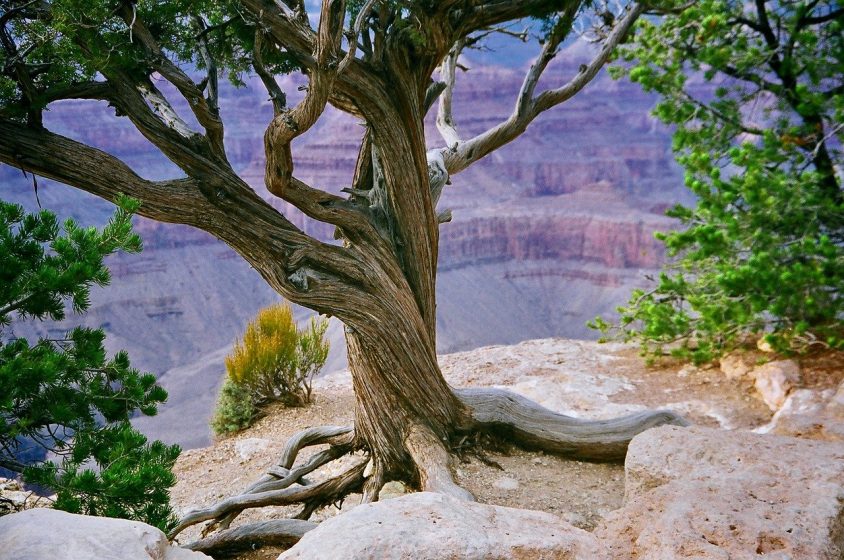No photo or video can capture the magnificence of the Grand Canyon, Arizona. It is believed that the 277-mile Canyon was started around 5 to 6 million years ago. Formed with the Colorado River flow, it is up to 18 miles wide in places and up to 1 mile deep. Besides, its geology has been formed over the past 2 billion years.
The human race has started populating the Grand Canyon since the Ice Age. The Grand Canyon facts suggest that Spanish explorers first invaded this space in the 1540s. Later, president Benjamin Harrison protected it as a natural reserve in 1893. Further, it became an official United States National Park in 1919.
Where is the Grand Canyon Located?
The location of the Grand Canyon in northern Arizona, at the north-west of Flagstaff city. Geologists find the rock layers of the Grand Canyon ideal to study evolution through time. The Vishnu Basement Rocks are the oldest known rocks in the Canyon. Those are located near the bottom of the Inner Gorge. The story behind the formations of those rocks is also quite fascinating. Those were formed around 1.7 billion years ago with hardened magma.
The Grand Canyon Weather:
The Grand Canyon, Arizona, experiences various weather conditions thanks to elevation spanning from around 2000 feet to over 8000 feet. The winters are cold, but the summers are pleasant with moderate humidity. However, the higher elevations experience diurnal temperature changes. The Grand Canyon’s bottom is known for cooler and damper winters, while the summers are drier and warmer. Summer thunderstorms and winter snowfalls are also quite regular in this region.
Native Culture at Grand Canyon Arizona:
One will be glad to know that archaeologists have discovered ruins and artifacts from inhabitants dating back nearly 12,000 years. Prehistoric human beings, mammoths, giant sloths and other large mammals first settled in this region in the last ice age. The large stone spear points work as evidence for early human occupations. Some other facts revealed about the Grand Canyon by archaeologists are:
- Small split- twig figurines shaped like deer and bighorn sheep were found in the caves in the Canyon walls. Experts believe those were made between 1000 to 2000 B.C. Those also give birth to prehistoric hunters’ speculations, leaving those figurines in the cave to perform some rituals. Simply put, those small statues indicate the hunting habits of the human race at that time.
- The ancestral Pueblo people followed by Paiute, Navajo, Zuni, and Hopi once inhabited in the Grand Canyon, Arizona. Recently, the Havasupai people claim it as their ancestral home. The Havasupai have lived in and around the Canyon for more than 800 years, according to tribal history.
- After a prolonged fight, this place finally belongs to the Havasupai. The cerulean pools and red rocks of Havasu Falls, located near a remote portion of Grand Canyon National Park, draw about 20,000 visitors each year. So, tourism has been their main way of living.
The Grand Canyon, Arizona, especially its South Rim, attracts visitors in large numbers. This area has many accommodations. On the other hand, the remote North Rim has fewer options. A traveler can access the Grand Canyon through the Grand Canyon Railway, running from Williams, Arizona. Some people also enjoy the 3 and half-hour car ride north from Phoenix or south from Las Vegas.
